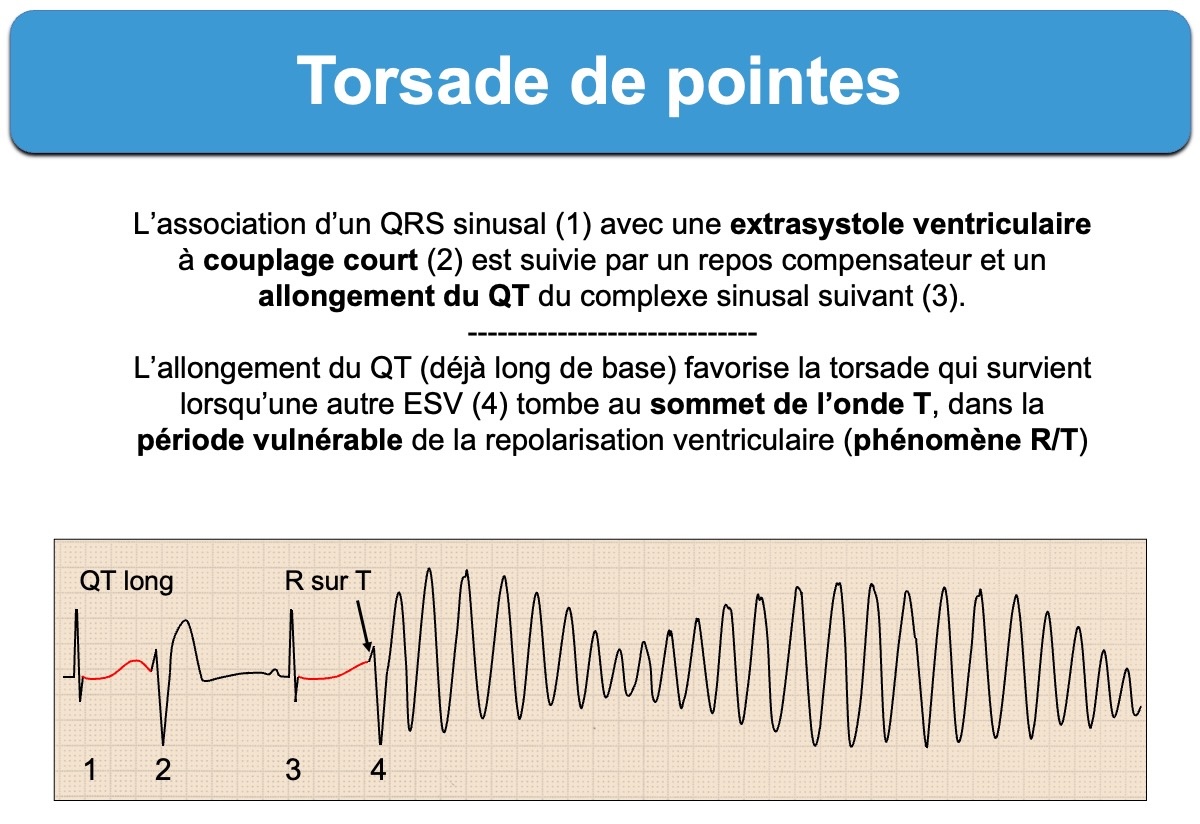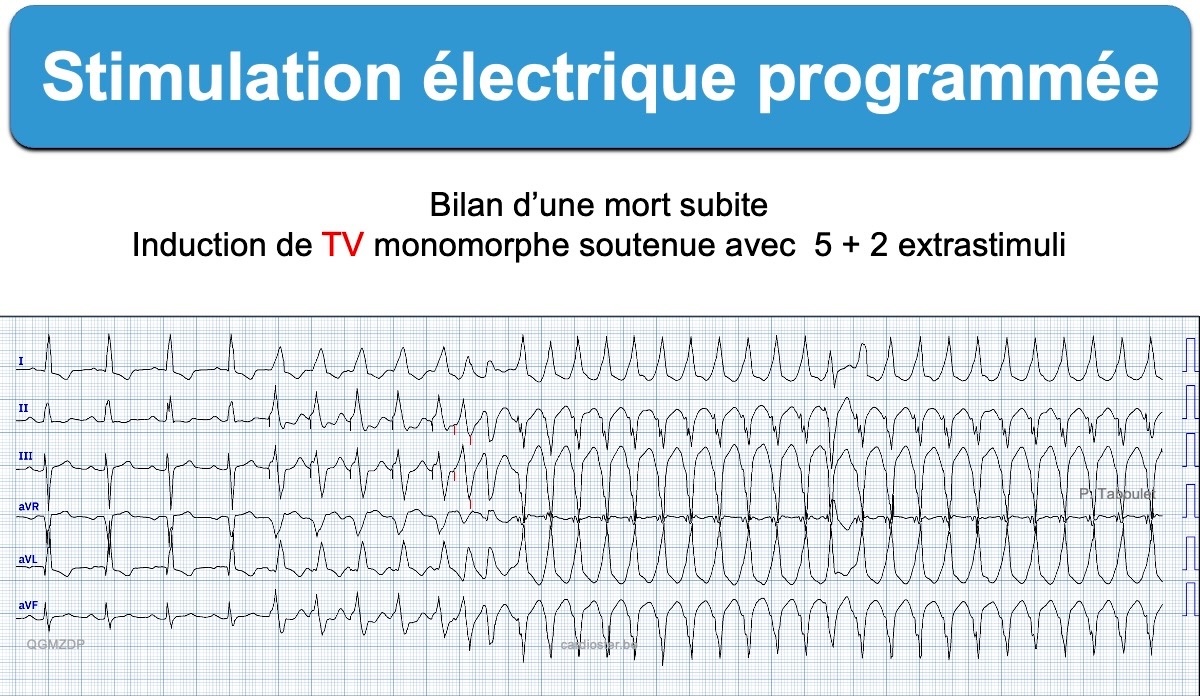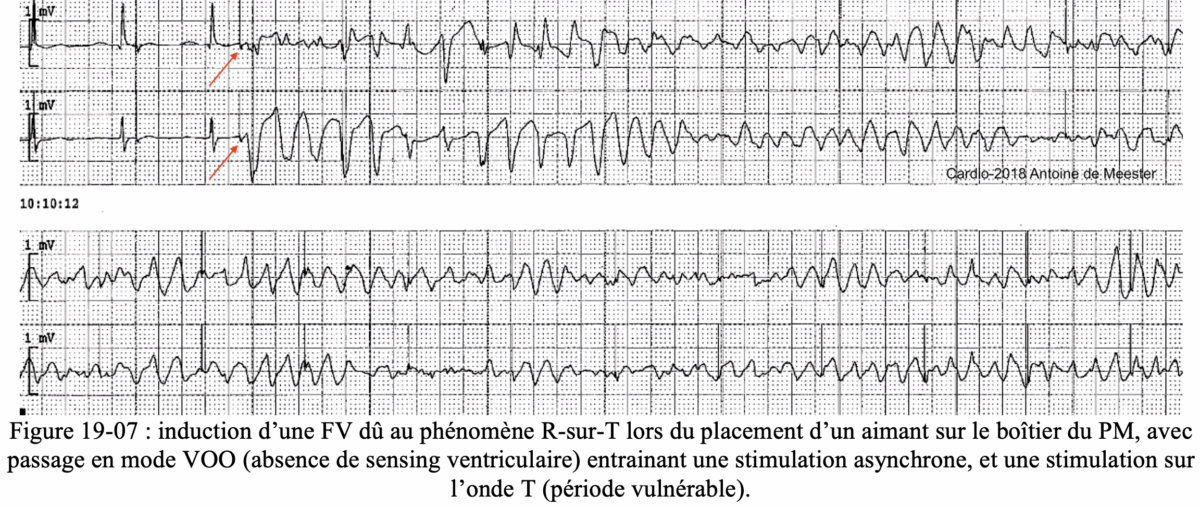Survenue d’un extrastimulus au cours de la repolarisation ventriculaire, durant un intervalle très bref (0,01 s) de la période vulnérable, à l’origine d’une arythmie ventriculaire.
- Le phénomène R sur T peut s’observer en cas de survenue d’une ESV très prématurée au sommet de l’onde T (cf. Repolarisation ventriculaire). Si l’intervalle QT est long, il peut donner lieu à une torsade de pointes.

- Si l’intervalle QT est normal, mais que l’ESV a un couplage court (cf. ESV malignes), il peut donner lieu à une TV polymorphe ou une FV.
- Il peut être provoqué lors d’une stimulation électrique programmée pour induire une TV.

- Il peut aussi survenir exceptionnellement si un pacemaker dépolarise un ventricule en période vulnérable (Stimulateur cardiaque. Dysfonctionnement).

[1] Oksuz F, Sensoy B, Sahan E, et al. The classical « R-on-T » phenomenon. Indian Heart J. 2015;67(4):392–394 (téléchargeable)
–-> The polymorphic ventricular tachycardia (PVT) is uncommon arrhythmia with multiple causes and has been classified according to whether they are associated with long QT interval or normal QT. Whereas « Torsade de pointes (TdP) » is an uncommon and distinctive form of PVT occurring in a setting of prolonged QT interval, which may be congenital or acquired (congenital or acquired), « PVT with normal QT » is associated with myocardial ischemia, electrolyte abnormalities (hypokalemia), mutations of the cardiac sodium channel (Brugada syndrome), and the ryanodine receptor (catecholaminergic PVT). This distinction is crucial because of the differing etiologies and management of these arrhythmias. Moreover, the PVT in the setting of acute MI generally occurs during the hyperacute phase, is related to ischemia (« ischemic PVT ») and is not associated with QT prolongation. It is triggered by ventricular extrasystoles with very short coupling interval (the « R-on-T » phenomenon) and is not pause-dependent.
Smirk F.H. R waves interrupting t waves. Br Heart J. 1949;11:23–36. [PMC free article]
Smirk F.H., Palmer D.G. A myocardial syndrome. With particular reference to the occurrence of sudden death and of premature systoles interrupting antecedent t waves. Am J Cardiol. 1960;6:620–629. Pas d’abstract
Surawicz B. R-on-T phenomenon : dangerous and harmless. J Appl Cardiol 1969; 24:629-50. (introuvable)
Voir ci-dessous une TV polymorphe catécholergique. Survenue de l’ESV après un intervalle R-R allongé favorisant le phénomène R sur T.



